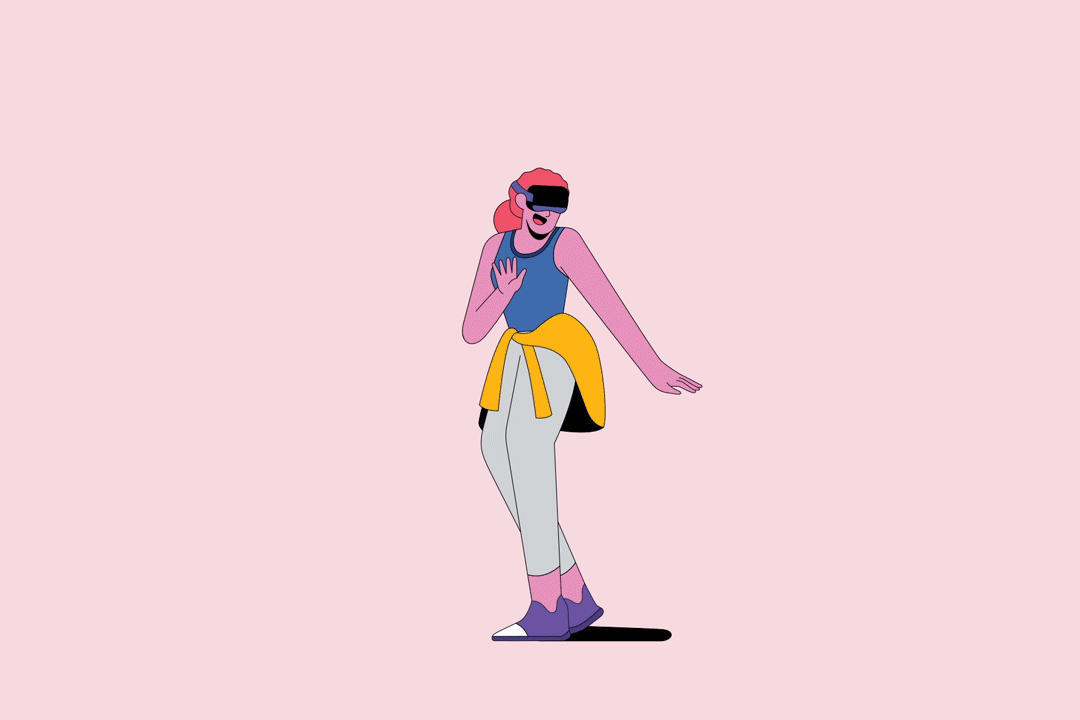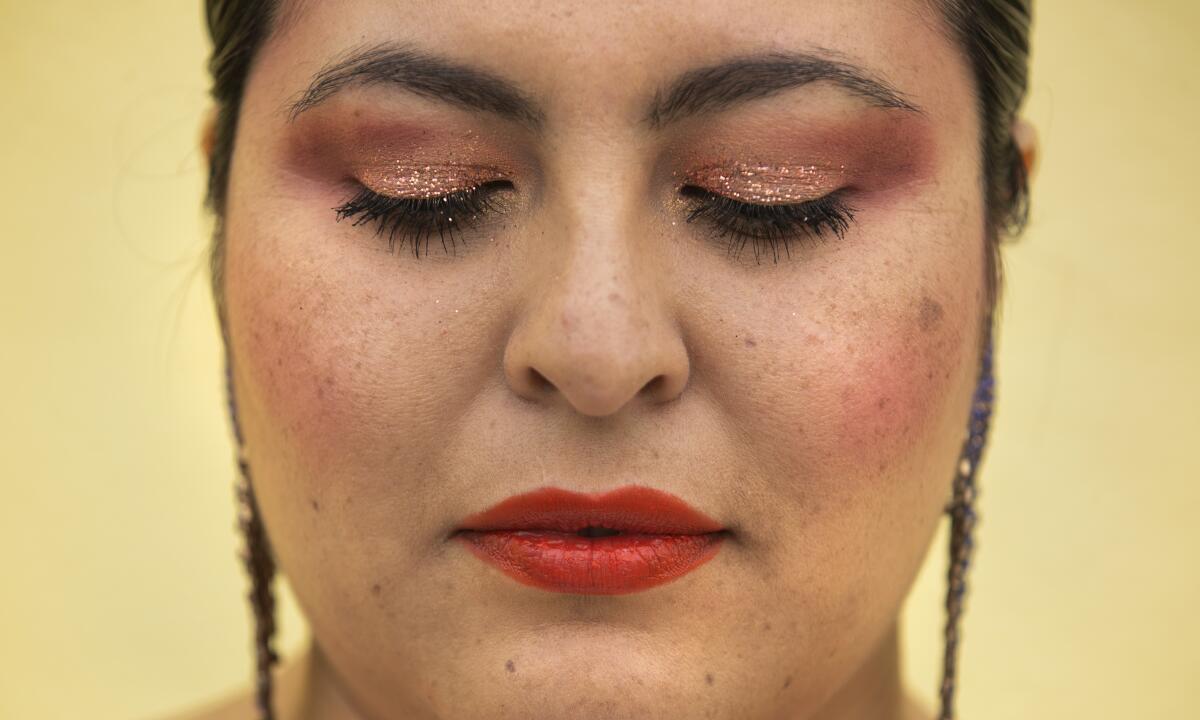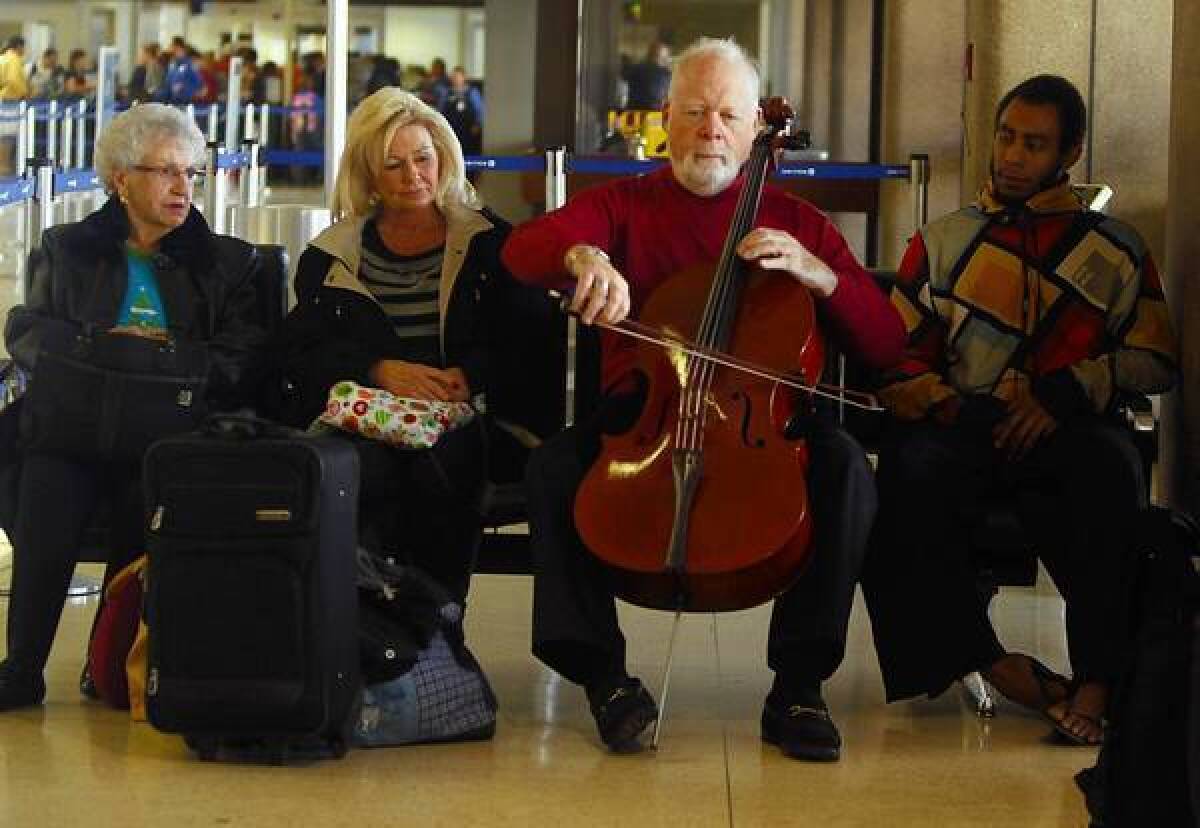Essential Arts: L.A. theater leaders plot a return to the stage
Greetings from the home office. I’m Carolina A. Miranda, staff writer at the Los Angeles Times, your weekly tour guide to all things arts and culture — and creepy art objets.
Essential image
Because we could all use something a little cosmic: Let’s start with the above collage by multimedia artist Lorna Simpson, recipient of a 2019 Getty Medal. Her solo show “Give Me Some Moments” lands on Hauser & Wirth’s website starting Saturday.
The artist has long created collages that employ images of people drawn from vintage magazines, transforming them into figures who seem as if they might just generate their own weather systems. She has continued to work throughout the pandemic. In fact, she made “Lyra night sky styled in NYC” on April 21. That same day, she shared a screenshot of the piece with a friend and learned that the constellation Lyra, shown in her collage, would be visible that night.
Make the most of L.A.
Get our guide to events and happenings in the SoCal arts scene. In your inbox once a week.
You may occasionally receive promotional content from the Los Angeles Times.
Find a conversation between Simpson and Thelma Golden, director of the Studio Museum in Harlem, right here. And see Simpson’s online exhibition at hauserwirth.com.
Art of survival
The Center Theater Group has launched a series of public discussions among theater leaders to talk about theater post-coronavirus. Times theater critic Charles McNulty says the first installment was “encouraging without being falsely optimistic.” The directors “shared stories of how they’ve been managing the crisis,” he writes, and, “most crucially, they offered strength in solidarity.”
Classical music critic Mark Swed turns to Deborah Borda, who once expertly steered the L.A. Phil out of debt, for some advice about how to get through tough times: “I say to the orchestra, just imagine the day when we all come together again, the first moment you’re onstage and the staff and everyone is there and you start to play.”
I am now one big crying emoji.
Corona and the arts
What does it mean for an artist to spend months working on an exhibition only to have it remain unseen? Contributor Leah Ollman spoke with a diverse group of artists about just that. L.A. painter Tom Wudl, who was opening a show at L.A. Louver when the pandemic hit, took the Buddhist approach: “I’ve had shows in a gallery that’s very open and no one’s come.”
L.A. Opera announced this week that it was canceling the remainder of its 2019-20 season but is avoiding layoffs and furloughs, reports Jessica Gelt. Members of the senior management team, however, will take pay cuts of 10% to 25%.
The San Francisco Symphony is canceling all concerts through August and is instituting across-the-board pay cuts. But in a glimmer of good news: The San Francisco Art Institute won’t close after all.
Broadway star Nick Cordero, known for his role in “Rock of Ages,” has been fighting a severe case of COVID-19. Fans have been tracking the news through the Instagram of his wife, Amanda Kloots. But as Times digital editor Tracy Brown writes, the Tony-nominated actor, who had a leg amputated due to complications from the disease, took a turn for the worse this week when he battled septic shock. He recovered from that bout but is still on a ventilator.
Enjoying this newsletter? Consider subscribing to the Los Angeles Times
Your support helps us deliver the news that matters most. Become a subscriber.
Judson Studios, the fabled stained glass studio in Highland Park, has survived two world wars, the Great Depression and the Great Recession of 2008. But the pandemic has forced the company to lay off its entire staff of designers, fabricators and installers.
L.A. City Councilman David Ryu has proposed converting funds derived from the percent-for-arts program into grants for small arts organizations.
Brussels museums have released proposed guidelines for reopening. They include one-way circulation, controlled admissions and no audio guides. The Uffizi in Italy is also working on a reopening plan.
The best viral performance of the pandemic thus far? Christine Baranski, Meryl Streep and Audra McDonald singing “The Ladies Who Lunch” to celebrate Stephen Sondheim‘s virtual 90th birthday party. All three wore bathrobes in a nod to the aesthetics of Zoom. Baranski was initially worried how it might be received: “We were all saying, ‘Oh, my God. Are we out of our minds to do this?’”
Charles McNulty tuned in to the show and reflects on Sondheim’s legacy: “The disrupter of the American musical, the man who reputedly drained show tunes of their romantic gaiety.” He has, he writes, “raised the bar by which composers and lyricists are now judged.”
I interview photographer Rafael Cardenas, who began 2020 with a simple plan: shoot a photo a day, every day of the year. He unwittingly covered a pandemic touching down in Los Angeles. “I set out to capture everyday life,” he tells me, but this is not everyday life.”
A global tango event attracting hundreds of people from 11 countries? It’s all going down on Zoom, of course. Makeda Easter reports on the biweekly “Earth Virtual Milonga” organized by L.A.-based dance instructor Yelizaveta Nersesova.
Inga Saffron has an interesting piece on how downtown Philly might evolve urbanistically in the wake of the pandemic — findings that can easily be extrapolated to other center city areas in the U.S.
As New York City prepares to set aside 100 miles of car-free streets, Ginia Bellafante argues to consider keeping them that way beyond the pandemic. Mark Lamster argues for something similar in Dallas. (Ahem, El Lay, where are we on this? Alissa Walker at Curbed has the possibilities all mapped out for you.)
Sebastian Smee looks into how the Association of Art Museum Directors has loosened rules about when it might be OK to dip into endowments or deaccession works as a way of contending with the financial effects of the pandemic.
Artist Artie Vierkant has a great essay in Art in America that looks at how internet art first emerged (in the wake of the 2008 recession) and what may emerge from the pandemic. He writes: “The art world we return to — if there is one to return to at all — will be formed in this moment.”
Plus: the Autry Museum of the American West has launched an initiative that is working to identify and preserve items of historical and cultural significance to the pandemic.
Six visions for LACMA
Six international architectural teams made the winning cut for a renegade architectural competition to reimagine the Los Angeles County Museum of Art. The contest was organized by the Citizens’ Brigade to Save LACMA, an ad hoc group that has been protesting the museum’s planned Peter Zumthor-designed building.
Arts writer William Poundstone gives the “the world’s most passive-aggressive architectural competition” an astute parsing.
When reality gets virtual
The Times has a series of reports about how virtual reality may be a boon to people trapped inside their homes during the shutdown. Gaming critic Todd Martens said he had been skeptical of VR experiences — “burned one too many times” — but has found that, mid-pandemic, these now provide an escape to a “more innocent era, one filled with childlike wonder.”

As part of that, he reviews experiences that provide the possibility of virtual interaction with other players and performers in what could become a new form of theater. And he reports that without virtual reality, he might not be exercising in this stay-at-home era. Plus, arts reporter Deborah Vankin looks at how some fine artists are using the technology with the help of Art Reality Studio, a workshop that could be the Gemini G.E.L. of virtual reality.
The best arts online
If you need some new listening, look no further: San Cha, whose contemporary takes on ranchera are helping update the genre, has an album out called “La Luz de la Esperanza.” “I love the romance,” she tells Dorany Pineda of why she is drawn to Mexican folk music. “I love the suffering for romance and the tragedy that comes with it.”

Matt Cooper has been rounding up the best culture to check out online, including a free stream of Du Yun and Royce Vavrek’s “Angel’s Bone,” courtesy of L.A. Opera, a replay of a performance by opera legend Jessye Norman at Lincoln Center and a doc that compares the teaching styles of Merce Cunningham and Martha Graham. (Get on that last one: the last screening is Saturday at 11:30 a.m.)
Get the scoop on everything there is to see by visiting our “Things to Do: Arts & Culture” page daily.
L.A. artist Tim Youd (who I have written about in the past), is retyping the entirety of William Gass’s 650-page novel “The Tunnel” in his garage throughout the month of May in a livestream performance supported by the Contemporary Art Museum St. Louis. (If you’re at work, keep it on in the background — there is something reassuring about the sound of a typewriter.)
For additional viewing, I also recommend this Instagram video of Youd talking about his art with a Chihuahua strapped to his chest.
Glenn Whipp reviews artist Rachel Mason’s Netflix documentary “Circus of Books,” about her parents, Karen and Barry Mason, who ran the legendary gay porn bookstores in West Hollywood and Silver Lake. It’s a terrific doc. Consider this essential L.A. viewing.
In recent days, I’ve been checking out the evolving online exhibition “Art at a Time Like This,” organized by curators Barbara Pollack and Anne Verhallen. It features work by a new artist every day, with recent posts including art by William Powhida (charting all manner of money and power) and some brilliant pieces by Joyce Kozloff and Fran Flaherty that map sites of aerial bombardments.
The site introduced me to the photographs of Antoine d’Agata, who started shooting images in Paris as the shutdown began, using a thermodynamic device that makes every scene feel intensely plague-like. (The photographer employed a similar technique when chronicling Paris in the wake of the attacks on the Bataclan music venue in 2015.)
Plus, New York mega-gallerist David Zwirner is hosting a group of 13 L.A. galleries on his website this week and it offers some good lookin’.
Passages
Germano Celant, the influential Italian curator who gave “Arte Povera” its name, has died at 79 from complications of COVID-19.
Betsy James Wyeth, the collaborator and muse of painter Andrew Wyeth, has died in Pennsylvania at 98.
Peter H. Hunt, a theater, film and television director who won a Tony for the original run of the musical “1776,” has died at 81 from complications of Parkinson’s disease.
Grammy-winning cellist Lynn Harrell, known for his “mixture of technical command and sweet songfulness,” has died at 76. Mark Swed pays tribute to a “a mensch and gentle giant” who was a familiar presence in L.A.: “If his name was on a program, I knew I needed to be there.”

Helen McGehee, a dancer who performed with Martha Graham’s company since the 1940s, has died at 98 in Lynchburg, Va.
In other news
— Jeremy O. Harris’ “Slave Play” will land at the Mark Taper Forum next season for its first production outside New York.
— I really enjoyed this piece by Scott Covert in Ursula about his adventures in creating gravestone rubbings.
— An interesting history of the Land O’Lakes maiden, from the son of the indigenous artist who helped create one of her more iconic iterations.
— Good reads: There’s now a book about the Cockettes. (Scroll to second item.)
— And Ron Athey pays tribute to Genesis Breyer P-Orridge.
Last but not least ...
Museums recently challenged one another to post the creepiest objects from their collections. I definitely think the Getty Museum should submit this creepy to the max 15th century Antonio Rizzo sculpture to the list.
The biggest entertainment stories
Get our big stories about Hollywood, film, television, music, arts, culture and more right in your inbox as soon as they publish.
You may occasionally receive promotional content from the Los Angeles Times.




